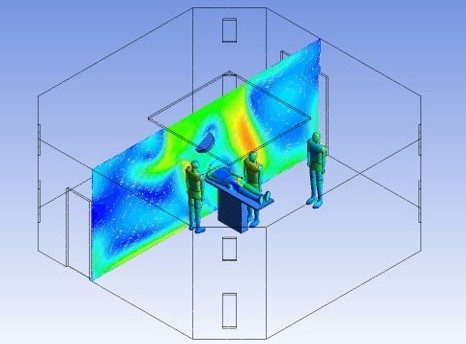
RBF Morph team share a study presented at the event Summer School on Reduced Order Methods in Computational Fluid Dynamics.
It is is an example of the possible use of the Reduced Order Model (ROM) in air quality management in an operating theater. We present a steady-state CFD (Computer Fluid Dynamics) simulation with the aim of obtaining, in real-time, the variables of interest associated with any change in the room conditions.
Thisis possible by means of a Digital Twin (DT), obtained by a ROM using a Singular Value Decomposition (SVD) compression algorithm.
The problem of air quality had been addressed in operating theaters, highlighting a link with the development of postoperative infections: it is estimated that 19.6% of all infections come from the operating room.
Inrecent decades, the use of CFD [2, 3], has allowed a better and faster understanding of the impact of differences in airflow injection methods through the possibility of easily carrying out multiple simulations that analyze the airflow field in an operating theater. The drawback of the CFD approach is the time required to run a simulation of a scenario that can be a bottleneck, even with the adoption of High Performance Computing (HPC). Such problem can be faced by using upfront HPC evaluation of many combinations of parameters (temperature, pressure, airflow, RH (Relative Humidity), CFU (Colony Forming Unit), etc.) according to the
standards. The results are then compressed by creating a ROM that can then be used to inspect how a new parameter combination impacts the field of the variables of interest.
Reach us with a message.
